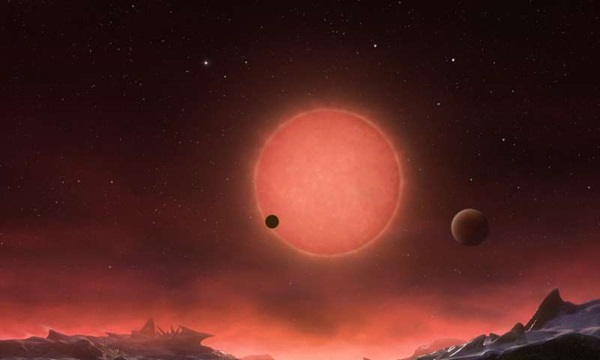Key Takeaways:
While the brightest stars can be easy to identify, their cooler cousins can be challenging to distinguish from the wannabes that never managed to reach stellar status. The difference can be huge when planets are involved, as with the three worlds orbiting the ultracool dwarf star TRAPPIST-1.
Scientists often identify stars by colors, and the coolest objects are the red dwarfs. The term covers everything from the coolest stars to their counterparts, brown dwarfs, objects that bridge the gap between stars and planets.
“Red dwarfs are kind of a catch-all for cool star-like things in general, both brown dwarfs and ultracool stars,” said Adam Burgasser, who studies the lowest mass objects at the University of California, San Diego. Although the term red dwarf is often used to reference dim stars known as M-dwarfs, there is no hard-and-fast official definition.
Initial observations of dim stars only reveal their color, or spectrum. Further observations can help nail down whether the dwarf is managed to kick off fusion in its heart.
“If its spectral appearance is cool, we call it a red dwarf. To distinguish between star and brown dwarf, we need other clues,” Burgasser said.
A sleuthing job
Brown dwarfs are often called ‘failed stars’ because their low mass keeps the hydrogen inside from fusing. As the object collapses in on itself, about half of the energy of the contraction goes to heating the star. When temperatures reach 5.4 million degrees Fahrenheit (3 million degrees Celsius), fusion kicks in, and a star is born. But brown dwarfs don’t have enough mass to squeeze in on itself. Pressure keeps the star from collapsing further, and fusion never starts.
On the other hand, when an object is just large enough to jumpstart the fusion process, the result is a faint, dim object known as an ultracool star. According to Burgasser, ultracool stars are “just on the other side of the hydrogen burning mass limit,” about 7 percent the mass of the sun. In fact, both brown dwarfs and ultracool stars resemble overblown Jupiters more than the sun. According to Michael Gillon, a researcher at the University of Liège in Belgium, the mass limit between a brown dwarf and a star is around 80 Jupiter masses. Gillon lead a team that identified three potentially habitable worlds around the nearby ultracool star TRAPPIST-1.
The easiest way to tell the difference between an ultracool star and a brown dwarf comes from taking its temperature. Objects cooler than 3092 F (1,700 C) must be brown dwarfs, while those hotter than 4,400 F (2,400 C) must be stars. Without an enormous thermometer, scientists determine how hot a red dwarf burns by studying its composition. Molecules like methane or ammonia can only exist in objects cooler than stars, so if a red dwarf contains these molecules, it can be classified as a brown dwarf.
When an object falls between the definite temperature boundaries, scientists must instead probe its atmosphere. The cores of fusing stars destroy lithium, so only brown dwarfs and young stars carry the light element in their atmosphere.
“True stars burn their lithium within a little over 100 million years, whereas brown dwarfs—which can, confusingly, have temperatures and luminosities similar to true stars—do not,” Gillon said.
Age can also help when it comes to classify the coolest objects. While the mass and temperature correspond to the age of a single object, the surrounding neighborhood can also provide insight about its lifetime. If an object is part of a young cluster or a companion to a more massive star with a known age, evolutionary models can suggest an independent age, which can lead to mass.
For a handful of cases, the mass of the red dwarf can be directly determined due to its companion or its method of discovery, and scientists can calculate whether or not the object was large enough to kick-start fusion.
“It’s a bit of a sleuthing job,” Burgasser said.










